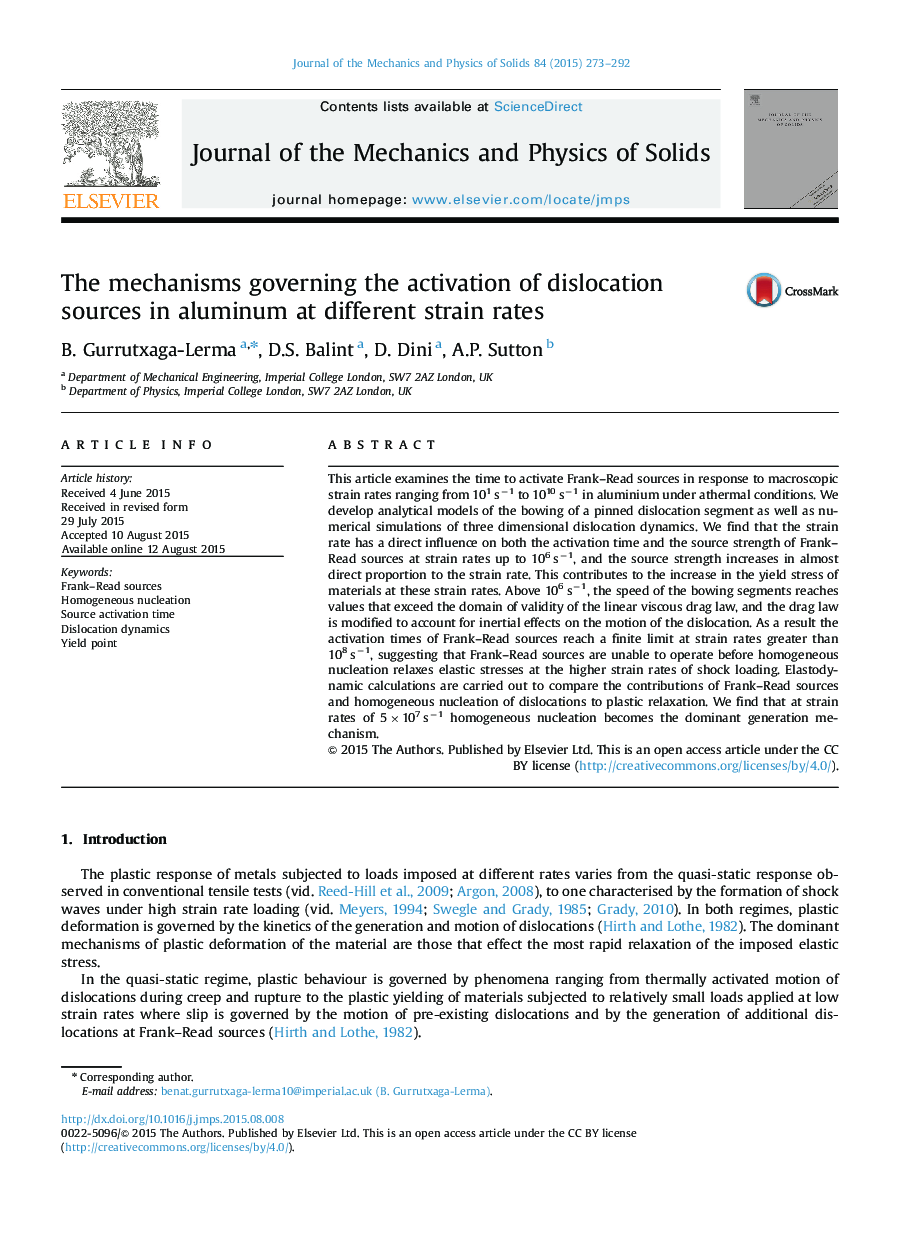| Article ID | Journal | Published Year | Pages | File Type |
|---|---|---|---|---|
| 7177917 | Journal of the Mechanics and Physics of Solids | 2015 | 20 Pages |
Abstract
This article examines the time to activate Frank-Read sources in response to macroscopic strain rates ranging from 101Â sâ1 to 1010Â sâ1 in aluminium under athermal conditions. We develop analytical models of the bowing of a pinned dislocation segment as well as numerical simulations of three dimensional dislocation dynamics. We find that the strain rate has a direct influence on both the activation time and the source strength of Frank-Read sources at strain rates up to 106Â sâ1, and the source strength increases in almost direct proportion to the strain rate. This contributes to the increase in the yield stress of materials at these strain rates. Above 106Â sâ1, the speed of the bowing segments reaches values that exceed the domain of validity of the linear viscous drag law, and the drag law is modified to account for inertial effects on the motion of the dislocation. As a result the activation times of Frank-Read sources reach a finite limit at strain rates greater than 108Â sâ1, suggesting that Frank-Read sources are unable to operate before homogeneous nucleation relaxes elastic stresses at the higher strain rates of shock loading. Elastodynamic calculations are carried out to compare the contributions of Frank-Read sources and homogeneous nucleation of dislocations to plastic relaxation. We find that at strain rates of 5Ã107Â sâ1 homogeneous nucleation becomes the dominant generation mechanism.
Related Topics
Physical Sciences and Engineering
Engineering
Mechanical Engineering
Authors
B. Gurrutxaga-Lerma, D.S. Balint, D. Dini, A.P. Sutton,
